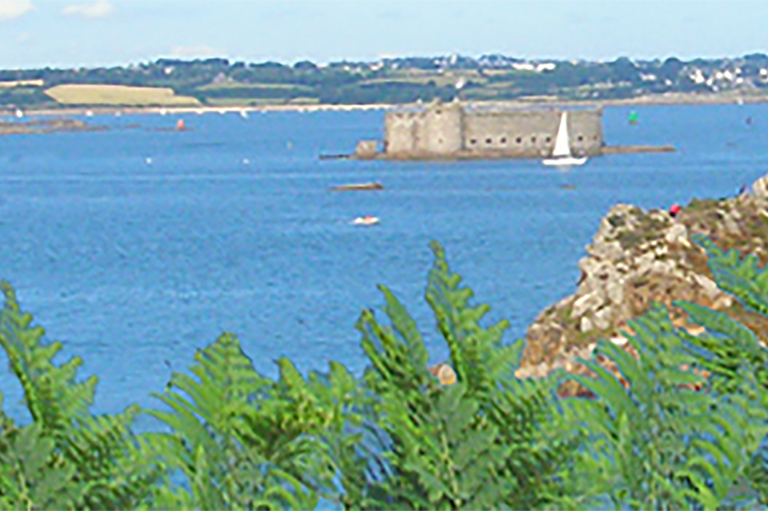- NSF Postdoctoral Fellow, Carnegie Institution, Stanford University, 1993
- Ph.D., University of California, Los Angeles, 1992

David Kehoe
Professor, Biology

Professor, Biology
Biology Bldg. A413
Our research group is broadly interested in uncovering the molecular mechanisms that control how organisms sense and respond to changes in their environment. Our primarily focus is on marine and freshwater cyanobacteria, oxygen producing microorganisms that are the progenitors of land plants and responsible for nearly one half of the Earth’s current primary productivity. This group is excellent for our studies because they have successfully colonized nearly every type of habitat on Earth (and thus are capable of a wide range of responses to environmental change), have relatively small genome sizes, grow rapidly, and many molecular genetic tools are available for their study. Our research efforts are providing important new insights into signal transduction pathways that are found in both bacteria and plants.
Cyanobacteria respond to a wide range of abiotic cues, including changes in light color and intensity, nutrient availability, temperature, and pH. We are currently focused on uncovering the signaling systems that control cellular responses to changes in light color availability. As we discover how these sensory pathways operate, we are working towards the long-term goal of understanding how signals from multiple environmental stimuli are integrated into a coherent overall cellular response. Our research tools include molecular biological, biochemical, genetic, and comparative and functional genomic approaches and involves multiple national and international collaborations. Our current projects address the mechanisms and regulation of light color responsiveness in freshwater lakes and throughout the world's oceans, collectively called "chromatic acclimation". This acclimation process is important because the spectral composition of light changes at various depths in a water column due to biotic and abiotic factors as well as because water absorbs longer wavelengths of light, such as red, better than it absorbs shorter wavelengths. Our projects are explained in more detail below.
Blue-Green Light Color Acclimation in Marine Cyanobacteria
The cyanobacteria that inhabit the Earth's oceans are of global ecological importance. Approximately one-half of the total primary productivity on our planet occurs in the oceans. Prochlorococcus and Synechococcus are two closely related cyanobacterial genera that are responsible for approximately 25% of this productivity and are the two dominant genera of cyanobacteria in the marine environment. Both are important members of the base of the marine food web. Synechococcus is present in nearly all surface waters of the ocean, especially abundant in coastal and nutrient-rich areas, while Prochlorococcus is located between 40 oS and 45 oN, generally open ocean and deep waters. Synechococcus has an estimated global population of 7x10 26 cells, while Prochlorococcus has an estimated global population of 3x10 27 cells.
Marine phytoplankton research, which predominantly focuses on questions that address the ecology and ecophysiology of these microorganisms, has shown that approximately 30% of Synechococcus strains isolated from the world's oceans acclimate to changes in the ratio of ambient light color through "Type 4 chromatic acclimation" (CA4). During CA4, cells change their color as they produce green and blue light-absorbing pigments at ratios that match the proportions of blue and green light in their environment.
Our laboratory has developed the genetic tools necessary to modify the genomes of a wide range of marine Synechococcus strains. We have formed a multidisciplinary team with the Partensky/Garczarek Laboratory at the CNRS Marine Biology Research Station in Roscoff, France, the Schluchter Laboratory at the University of New Orleans, and the Karty Laboratory at Indiana University. Our cross-discipline collaboration seeks to understand the evolution, ecological importance, and mechanism of CA4. Our group has identified two related genomic islands that are responsible for conferring CA4 and discovered the molecular mechanisms underpinning the blue and green light induced pigment changes that occur during this process. We have also identified two putative transcriptional regulators called FciA and FciB that act in opposition to each other to control the blue-green light response. We are currently working to uncover the photoreceptor(s) regulating the CA4 response and signal transduction mechanism(s) through which they operate.
We are also developing additional cutting edge molecular genetic tools for marine Synechococcus by incorporating new technology such as CRISPR for gene deletion, allelic replacement, inducible repression of gene expression and providing these to the biological oceanography research community for use in their studies.
Genomics and Bioinformatics
Microbial Cell Biology and Environmental Responses
Plant Molecular Biology
Dufour, L., Garczarek, L., Mattei, F., Gouriou, B., Clairet, J., Ratin, M., Kehoe, D. M., Huisman, J., Verspagen, J. M. H., and F. Partensky. 2025. Competition for light color between marine Synechococcus strains with fixed and variable pigmentation. Applied and Environmental Microbiology 91:e00087-25 https://doi.org/10.1128/aem.00087-25
Haney, A. M., Sanfilippo, J. E., Garczarek, L., Partensky, F., and D. M. Kehoe. 2022. Multiple photolyases protect the marine cyanobacterium Synechococcus from ultraviolet radiation. mBio. 13 (4) e01511-22. https://doi.org/10.1128/mbio.01511-22
Grébert, T., Garczarek, L., Daubin, V., Humily, F., Marie, D., Ratin, M., Devailly, A., Farrant, G. K., Mary, I., Mella-Flores, D., Tanguy, G., Labadie, K., Wincker, P., Kehoe, D. M., and F. Partensky. 2022. Diversity and evolution of pigment types in marine Synechococcus cyanobacteria. Genome Biology and Evolution. 14 (4) evac035. https://doi.org/10.1093/gbe/evac035
Grébert, T., Garczarek, L., Daubin, V., Humily, F., Marie, D., Ratin, M., Devailly, A., Farrant, G. K., Mary, I., Mella-Flores, D., Tanguy, G., Labadie, K., Wincker, P., Kehoe, D. M., and F. Partensky. 2021. Diversity and evolution of pigment types and the phycobilisome rod gene region of marine Synechococcus cyanobacteria. bioRxiv. https://doi.org/10.1101/2021.06.21.449213
Grébert, T., Nguyen, A. A., Pokhrel, S., Joseph, K. L., Ratin, M., Dufour, L., Chen, B., Haney, A. M., Karty, J. A., Trinidad, J., Garczarek, L., Schluchter, W. M., Kehoe, D. M., and F. Partensky. 2021. Molecular basis of an alternative dual-enzyme system for light color acclimation of marine Synechococcus cyanobacteria. Proceedings of the National Academy of Sciences USA. 118 (9) e2019715118. https://doi.org/10.1073/pnas.2019715118
Nguyen, A. A., Joseph, K. L., Bussell, A. N., Pokhrel, S., Karty, J. A., Kronfel, C. M., Kehoe, D. M., and W. M. Schluchter. 2020. CpeT is the phycoerythrobilin lyase for Cys-165 on b phycoerythrin from Fremyella diplosiphon and the chaperone-like protein CpeZ greatly improves its activity. Biochimica Biophysica Acta—Bioenergetics. 1861: 148284
Kronfel, C. M., Biswas, A., Frick, J. P., Gutu, A., Blensdorf, T., Karty, J. A., Kehoe, D. M., and W. M. Schluchter. 2020. Biogenesis of phycoerythrin. I. Defining the roles of the phycoerythrobilin lyase CpeY and the chaperone-like protein CpeZ in Fremyella diplosiphon. Biochimica Biophysica Acta—Bioenergetics, 1860: 549-561. https://doi.org/10.1016/j.bbabio.2019.06.001
D. M. Kehoe. 2020. Phycobilisome Antennae and Chromatic Acclimation. Encyclopedia of Biochemistry. R. Blankenship, Ed. Elsevier Publishers, 3rd Edition
Sanfilippo, J. E., Garczarek, L., Partensky, F., and D. M. Kehoe. 2019. Chromatic acclimation in cyanobacteria: A diverse and widespread process for optimizing photosynthesis. Annual Review of Microbiology, 73:407-433.
Kronfel, C. M., Hernandez, C. V., Hernandez, L. S., Gutu, A., Karty, J. A., Boutaghou, M. N., Kehoe, D. M., Cole, R. B., and W. M. Schluchter. 2019. Biogenesis of phycoerythrin. II. CpeF is the bilin lyase that ligates the doubly-linked phycoerythrobilin on β-phycoerythrin in Fremyella diplosiphon. Journal of Biological Chemistry, 294: 3987-3999
Sanfilippo, J. E., Nguyen, A. A., Garczarek, L., Karty, J. A., Pokhrel, S., Strnat, J. A., Partensky, F., Schluchter, W. M., and D. M. Kehoe. 2019. Interplay between differentially expressed enzymes controls light color acclimation in marine Synechococcus. Proceedings of the National Academy of Sciences USA, 116: 6457-6462
Haney, A. M. and D. M. Kehoe. 2019. Microbe of the month: Fremyella diplosiphon. Trends in Microbiology, 27: 562-563 (Note: This manuscript was featured on the cover of the journal.)
Wiltbank, L. B. and D. M. Kehoe. 2019. Diverse light responses of cyanobacteria mediated by phytochrome superfamily photoreceptors. Nature Reviews Microbiology, 17: 37-50
Grébert, T., Doré, H., Partensky, F., Farrant, G. K., Boss, E., Picheral, M., Guidi, L., Pesant, S., Scanlan, D. J., Wincker, P., Acinas, S. G., Kehoe, D. M. and L. Garczarek. 2018. Light color acclimation: a key process in the global ocean distribution of Synechococcus cyanobacteria. Proceedings of the National Academy of Sciences USA. 115 E2010-E2019;doi.org/10.1073/pnas.1717069115
Mahmoud, R. M., Sanfilippo, J. E., Nguyen, A. A., Strnat, J. A., Partensky, F., Garczarek, L., El-Kassem, N. A., Kehoe, D. M. and Schluchter, W. M. 2017. Adaptation to blue light in marine Synechococcus requires MpeU, an enzyme with similarity to phycoerythrobilin lyase isomerases. Frontiers in Microbiology 8: 243.
Sanfilippo, J. E., Nguyen, A. A., Karty, J. A., Shukla, A., Schluchter, W. A., Garczarek, L., Partensky, F. and D. M. Kehoe. 2016. A self-regulating genomic island encoding tandem regulators confers chromatic acclimation to marine Synechococcus. Proceedings of the National Academy of Sciences USA. 113(21): 6077-6082.
Wiltbank, L. B. and D. M. Kehoe. 2016. Two cyanobacterial photoreceptors regulate photosynthetic light harvesting by sensing teal, green, yellow and red light. mBio. (1): e02130-15.

Banner photo: View from Brittany, France, location of Roscoff Marine Biology Research Station, Sorbonne University